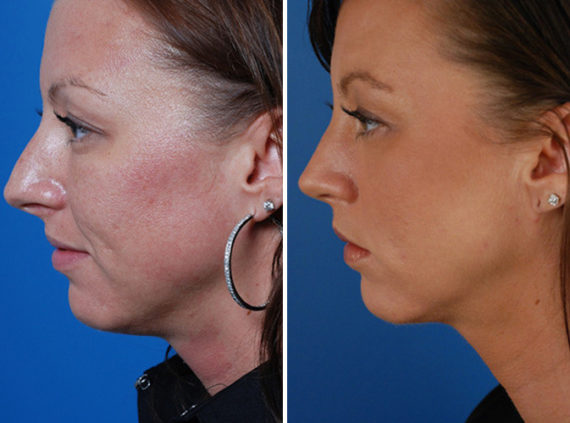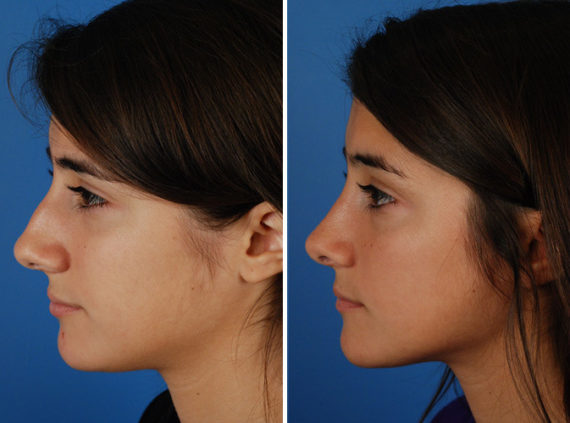In a world where looks are important, it’s simple to forget that our noses do vital functions other than looking good. The nasal passages clean and condition the air we breathe so that it gets to our lungs in the best condition possible. But structural problems or stuffy noses can make it hard to breathe and cause other health problems. Functional rhinoplasty is useful because it not only changes the way the nose looks but also makes it work better.

Balancing Form and Function with Rhinoplasty
- Functional rhinoplasty focuses on improving nasal function and breathing, while cosmetic rhinoplasty aims to enhance the nose’s appearance.
- Functional rhinoplasty can correct structural problems like deviated septums and enlarged turbinates, significantly improving breathing and overall nasal health.
- Both procedures can enhance facial symmetry and aesthetics, with functional rhinoplasty also providing cosmetic benefits by addressing structural issues.
- Functional rhinoplasty utilizes various techniques tailored to individual needs, such as reshaping nasal bones and cartilage to optimize airflow and appearance.
- Post-operative care for functional rhinoplasty involves managing swelling and discomfort, with long-term healing requiring several months and follow-up appointments to ensure optimal outcomes.
Functional vs. Cosmetic Rhinoplasty
As the name suggests, functional rhinoplasty is surgery that is meant to make the nose work better. Cosmetic rhinoplasty is mostly about making the nose look better. Functional rhinoplasty, on the other hand, fixes problems with the nasal passages, airway, and how well you breathe generally. It can fix problems with the structure of the nose, which makes breathing through the nose easier for some people.
Restoring or improving nasal function is the main goal of functional rhinoplasty, while cosmetic rhinoplasty aims to improve the nose’s look for aesthetic reasons. As a result, these two methods are often used together to get both useful and aesthetic benefits, achieving a balance between form and function.
Common Nasal Issues
The Importance of Nasal Passages
Our nasal passages play an important part in our overall health. They clean and prepare the air we breathe, getting rid of pollutants and making sure it has the right amount of moisture before it gets to our lungs. When nasal problems like stuffy noses or blockages happen, they can make this important job harder to do, which can cause pain and health problems.
Nasal Obstructions and Their Impact
Nasal blockages can be caused by many things, such as septums that aren’t lined up properly, turbinates that are too big, or scar tissue from previous surgeries or injuries. These blockages can make it hard to breathe, keep you from sleeping, and even cause long-term health problems like sleep apnea.
Structural Issues: Nasal Bones and Nasal Septum
Breathing problems can also be caused by problems with the bones and septum in the nose. For instance, a broken nose that makes the nose pointy can make it hard for air to flow. These structural problems can be fixed with functional rhinoplasty, which can help people breathe better and sleep better.
Functional rhinoplasty offers a range of benefits that extend beyond improved breathing. This surgical procedure can significantly enhance the quality of life for individuals suffering from nasal issues.
Functional Benefits of Rhinoplasty
Improving Nasal Breathing
One big plus of functional rhinoplasty is that it can make breathing through your nose a lot easier. Fixing structural problems in the nasal passages can help you breathe better.
Correcting Nasal Obstructions
Functional rhinoplasty is really effective at dealing with nasal obstructions. If you have a deviated septum, enlarged turbinates, or scar tissue, surgery can fix these problems and allow air to flow freely. This can help reduce chronic congestion, nasal blockage, and the need to use decongestants all the time.
Enhancing Nasal Airflow
This type of rhinoplasty doesn’t just fix specific problems; it also boosts overall nasal airflow. Surgeons use different techniques to make sure air flows smoothly through your nose. This can lead to better oxygen intake, less snoring, and improved sleep quality.
Are You Ready For A Consultation?
You are about to take the first steps towards improving your appearance and enhancing your self-image by learning about contemporary plastic surgery.
Cosmetic Aspects of Functional Rhinoplasty
The Balance of Form and Function
This surgery does more than just improve the way your nose works; it also makes it look better. The goal of surgeons is to make your nose look good and work well. This might make you feel better about your looks and boost your confidence.
Addressing Cosmetic Concerns
Although the main goal of functional rhinoplasty is to improve function, it can also be used to fix some appearance issues. For example, straightening out a crooked septum can make the nose look better. With this double benefit, functional rhinoplasty is a good choice for people who want to improve both their function and their appearance.
The Surgical Procedure
Surgical Techniques in Functional Rhinoplasty
Functional rhinoplasty uses different surgery techniques that are adjusted to meet the needs of each patient. Some of these methods are changing the shape of the nasal bones, adjusting the septal cartilage, or lowering the size of turbinates that are too big. Which method is used depends on the person’s unique nasal structure and what they want to achieve.

Recovery and Healing
What to Expect in the Days After Surgery
After functional rhinoplasty, patients can expect some pain and swelling during the healing process. After surgery, many people wear a nasal splint for a week to help their nose heal. In the beginning, patients may feel some mild pain and stuffy noses, but these symptoms get better over time.
Long-Term Healing Process
The healing process extends beyond the immediate post-operative phase. While visible swelling and bruising typically resolve within a few weeks, complete healing may take several months. It’s essential to follow post-operative instructions and attend follow-up appointments with your surgeon to monitor progress.
Who Should Consider Functional Rhinoplasty?
Individuals experiencing nasal issues that affect their daily lives are candidates for this surgery. People who have chronic stuffy noses, trouble breathing through their noses, or a history of nasal injuries are the best options. A board-certified face plastic surgeon should be your first stop when you want to know if functional rhinoplasty is the right choice for you.
Before & After Photos
* Each patient is unique and individual results may vary.
Rhinoplasty Techniques
Surgical Approaches and Specializations
Since rhinoplasty experts often specialize in different methods and techniques, they can help with a lot of different problems. Choose a surgeon who is experienced in the type of rhinoplasty you need, whether you need primary rhinoplasty to fix a structural problem or secondary rhinoplasty to fix a mistake made during a previous surgery.
Secondary and Revision Rhinoplasty
Secondary rhinoplasty, sometimes called revision rhinoplasty, is a special surgery for people who have already had rhinoplasty but want to make more changes or improvements. For this process to work, the surgeon must be skilled and have experience with difficult cases.
Functional Improvements
The Transformation of Breathing
Perhaps the most significant benefit of functional rhinoplasty is the transformation it can bring to a person’s breathing. Patients who once struggled with nasal obstructions and breathing issues often experience a newfound sense of ease and comfort after the procedure. Improved nasal airflow can lead to better sleep, reduced snoring, and enhanced overall quality of life.
Benefits Beyond the Nose
The advantages of functional rhinoplasty extend beyond nasal health. Improved breathing can enhance physical activity by increasing oxygen intake, making strenuous activities more manageable. Additionally, it can alleviate symptoms like dry mouth and the need for frequent water consumption during exercise.
Minimizing Risks
Understanding Potential Complications
Like any surgical procedure, functional rhinoplasty carries some inherent risks. These may include infection, bleeding, or adverse reactions to anesthesia. However, the likelihood of these complications is significantly reduced when the procedure is performed by a skilled and experienced surgeon in a safe surgical environment.
Life After Functional Rhinoplasty
Returning to Physical Activities
Functional rhinoplasty carries some inherent risks. These may include infection, bleeding, or adverse reactions to anesthesia. However, the likelihood of these complications is significantly reduced when the procedure is performed by a skilled and experienced surgeon in a safe surgical environment.
Maintaining Nasal Health
Maintaining nasal health is essential after functional rhinoplasty. This includes regular follow-up appointments with your surgeon to monitor progress and address any concerns. Proper care and hygiene of the nasal tissues can help prevent complications and ensure long-term success.
Beyond the Nose
The Impact on Facial Appearance
Functional rhinoplasty not only improves nasal function but can also have a subtle yet noticeable effect on one’s overall facial appearance. A well-balanced nose that functions optimally contributes to a harmonious facial profile and enhances the symmetry of the face.
The Sense of Smell
A lesser-known benefit of functional rhinoplasty is the potential improvement in the sense of smell. When nasal obstructions are corrected, individuals may experience a heightened ability to detect and enjoy various scents and flavors, enhancing their overall sensory experience.
If you’ve been struggling with breathing issues or other nasal problems, functional rhinoplasty could be the solution you’ve been searching for. This procedure not only addresses functional concerns but also offers cosmetic benefits, striking the perfect balance between form and function.
Don’t let nasal obstructions or structural issues hold you back. Take the first step towards a healthier, more comfortable life by scheduling an appointment with the specialist in functional rhinoplasty, Dr. Agarwal, Dr. Maloney, and Dr. Holmes. With their expertise and commitment to patient care, you can look forward to a brighter, more confident future. Don’t delay—schedule your appointment today and breathe easier tomorrow.

